How Direct Debit for Healthcare Simplifies Your Budgeting Process
The adoption of direct debit for healthcare payments marks a significant leap towards simplifying the financial aspects of personal healthcare management. This seamless payment solution empowers patients by streamlining the budgeting process, ensuring timely and hassle-free transactions for healthcare services. With the focus shifted away from complex payment arrangements, patients can allocate more time and resources to their health and well-being, embracing a more stress-free approach to managing healthcare expenses.
Furthermore, direct debit facilitates easier access to personal assistants for home healthcare, bridging the gap between personal health budgets and the delivery of customised care. Whether secured through the NHS or private channels, personal assistants NHS become more attainable, enhancing the quality of life for those in need. This blog aims to explore the synergy between personal health budgets, direct debit, and the invaluable role of private personal assistants, setting the stage for a more accessible and patient-centric healthcare experience.
Setting Up Direct Debit: A Step-by-Step Guide for Patients and Families
Navigating the setup of direct debit for healthcare payments doesn't have to be complicated. This step-by-step guide is designed to help patients and their families easily integrate direct debit into their healthcare payment processes, ensuring a smooth transition to this efficient and reliable method.
Understanding the Prerequisites
Before initiating the setup process, ensure you have all the necessary information and documents at hand. This includes your bank account details, the healthcare provider's details, and an understanding of your regular healthcare expenses. Having a clear overview of your monthly healthcare budget can significantly streamline the setup process.
Choosing Your Direct Debit Provider
Research Providers: Start by researching direct debit providers that are compatible with your healthcare service provider. Look for a provider that offers robust security measures, straightforward setup procedures, and excellent customer support.
Contact Your Healthcare Provider: Once you've chosen a provider, contact your healthcare provider to confirm their preferred direct debit system. They may have specific providers they work with or offer guidance on setting up your payments.
Completing the Direct Debit Mandate
Fill Out a Direct Debit Mandate Form: This form authorises the direct debit provider to collect payments from your bank account on behalf of your healthcare provider. Ensure that all provided information is accurate to prevent any delays or issues.
Submit the Mandate Form: Submit the completed form to your healthcare provider or directly to the direct debit service provider, depending on the instructions provided. This can often be done online, making the process quicker and more convenient.
Monitoring Your Payments
Confirmation and First Payment: You should receive confirmation from both your bank and the direct debit provider that your direct debit setup is complete. Note the date of the first payment and ensure there are sufficient funds in your account.
Regular Review: Regularly review your bank statements to ensure that the correct amounts are being debited. If your healthcare expenses change, contact your provider to adjust your direct debit amount accordingly.
By following these steps, patients and families can enjoy the benefits of direct debit for healthcare payments, including reduced paperwork, timely payments, and improved budget management. This guide aims to demystify the process, making it accessible for all who wish to streamline their healthcare payment methods.
The Benefits of Using Direct Debit for Healthcare Payments
Direct debit offers a streamlined and efficient solution for managing healthcare payments, bringing significant benefits to both providers and patients.
Simplified Payment Processing
Direct debit significantly reduces the administrative burden associated with healthcare payments. By automating the transaction process, healthcare providers can allocate fewer resources to managing paperwork and payment follow-ups. This automation ensures that payments are processed accurately and on time, reducing the likelihood of errors and improving operational efficiency.
Automation of payments through direct debit not only accelerates the transaction process but also lowers transaction costs for healthcare providers. By eliminating the need for manual processing, direct debit reduces labour costs and resource allocation towards payment management, making it a cost-effective solution for both small and large healthcare practices.
Improved Cash Flow Management
Direct debit establishes a predictable payment schedule, allowing both healthcare providers and patients to forecast their cash flows with greater accuracy. This predictability helps in budgeting and financial planning, ensuring that funds are always available for necessary healthcare services and operational expenses.
With direct debit, patients are less likely to miss payments, providing healthcare providers with a stable and reliable revenue stream. This stability is crucial for maintaining the financial health of healthcare practices, enabling them to plan for growth and invest in quality care delivery without worrying about cash flow volatility.
Enhanced Patient Satisfaction
Direct debit simplifies the payment process for patients, offering a convenient and hassle-free way to settle healthcare bills. Patients appreciate the ease of not having to remember payment deadlines or go through the process of making manual payments, enhancing their overall experience with the healthcare provider.
The secure nature of direct debit transactions reassures patients that their financial details are handled safely. This trust is fundamental in the patient-provider relationship, contributing to a positive healthcare experience and encouraging continued engagement with the provider.
The integration of direct debit in healthcare payments not only enhances operational efficiency and financial stability but also significantly improves the patient experience. By addressing both administrative challenges and patient needs, direct debit emerges as a comprehensive solution for modern healthcare payment management.
Conclusion
The adoption of direct debit for healthcare payments represents a transformative shift in how we approach healthcare financing. It simplifies the financial landscape for patients and families, enabling a focus on health and well-being rather than the complexities of payment management. This system not only enhances efficiency and reliability for healthcare providers but also significantly improves the patient experience by providing a seamless, secure, and user-friendly payment method. Furthermore, direct debit aligns perfectly with the goals of personal health budgets, facilitating access to essential healthcare services, including personal assistants for home care.

